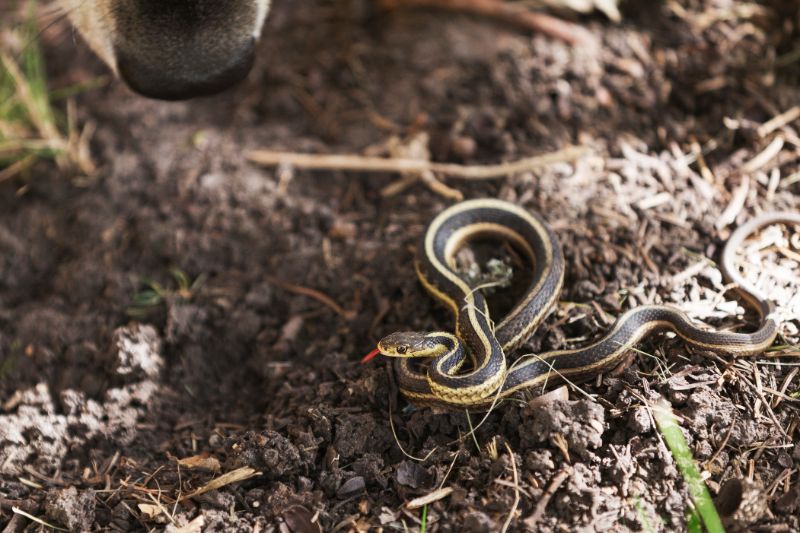Encounters in the Wild: Snake Safety for Pet Owners
Lions and tigers and bears, oh my!
Well, maybe not so much the lions (unless they are of the mountain variety) and tigers part, but in the great outdoors here in California, wild animal encounters are certainly a concern for pet owners.
While tangles with skunks and brushes with mountain lions are definitely worrisome, the most common wild animal exposure that we worry about at Sunrise Boulevard Animal Hospital is snakes.
Pet owners should have some basic snake safety knowledge to help keep their pets out of trouble.
Sacramento Valley Snakes
In the northern part of California, snakes may not be as active year round, but there are still plenty of them. Snakes are cold blooded creatures and tend to be less prevalent in the cooler parts of the year. Don’t worry, though, we have plenty of sunny, warm weather for them, too.
Common snakes in this area include:
- Gopher Snake (not venomous)
- Sharp-tailed snake (not venomous)
- California Kingsnake (not venomous)
- Western Rattlesnake (venomous)
- Western and striped Racers (not venomous)
- Garter snake (not venomous)
While you may see quite a few snakes sunning themselves when you venture out, the vast majority are nothing to worry about.
Slithering Away from Trouble
While most snakes in the Sacramento Valley are not trouble for people or pets, it doesn’t mean that we shouldn’t be respectful of them. Dogs and cats cannot differentiate between a Garter snake and a Rattlesnake, so teaching them to treat all snakes the same is important.
If you are careful you can minimize snake encounters by simply understanding their behavior.
Snakes need warmth and will tend to be out in the sun during warmer parts of the day. During cooler times you are more likely to find them under rocks or nestled in more tucked away areas.
Snakes also need access to these areas to stay safe and warm. Brush piles, rocks, and other debris make great snake sanctuaries. Keeping your yard and other areas your pet frequents clear of these areas can help minimize snake encounters.
When you take your pet out in nature, keep to marked trails and avoid moving objects like logs and large rocks when possible.
Snake Safety 101
If you do see a snake, just steer clear. Snakes aren’t aggressive and won’t bother you or your pet unless they are threatened. In fact, most times even a rattlesnake will warn with its telltale rattling sound before striking.
Prepare your pet for snake encounters by:
- Never allowing them to pester wildlife at any time
- In areas where snakes are likely to be present, keep your pet on a six-foot lead (avoid retractable leashes)
- Work on having your pet come on command so that you can keep them safe if you sense danger
- Consider training a “leave it” command to interrupt potentially disastrous situations
That said, if your pet has an encounter with a rattlesnake, it is a true pet emergency. While not all rattlesnake strikes end with venom, some do, and it is impossible to differentiate a dry bite from one with venom.
Rattlesnake venom damages the tissue locally and begins to cause hemorrhage and potential shock very quickly. A potential bite is serious business and it is important that you come and see us right away. In this situation, minutes count.
For some pets it makes sense to vaccinate against rattlesnake venom. Vaccinated pets are still at risk when bitten, however it can help buy a little time in the case of envenomation. Our expert staff is happy to discuss the pros and cons of this with you.
Snake safety is an important part of pet ownership here in California. While most snakes are harmless, we do need to carefully supervise our pets interactions with wildlife so that everyone can enjoy the great outdoors.

